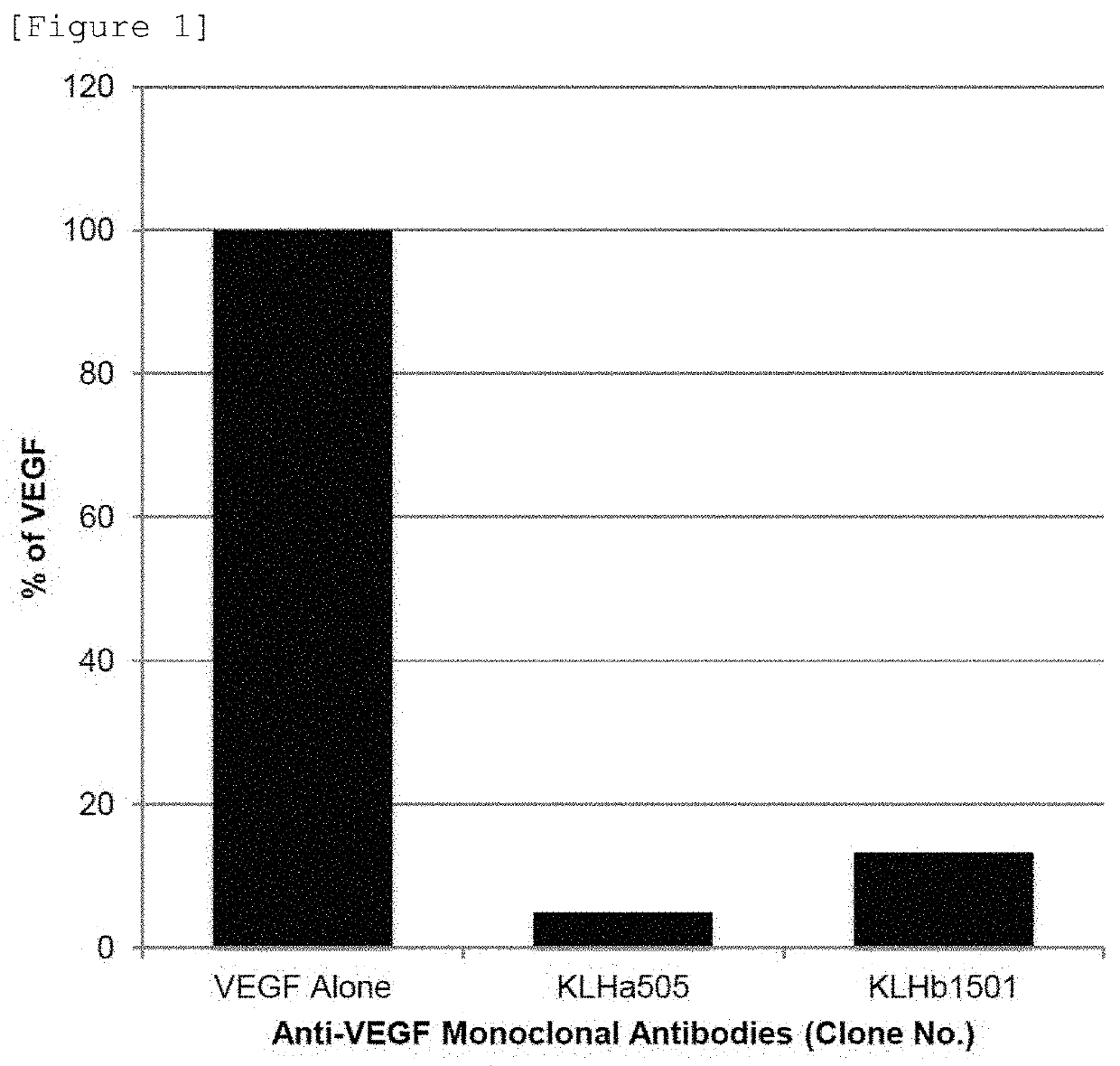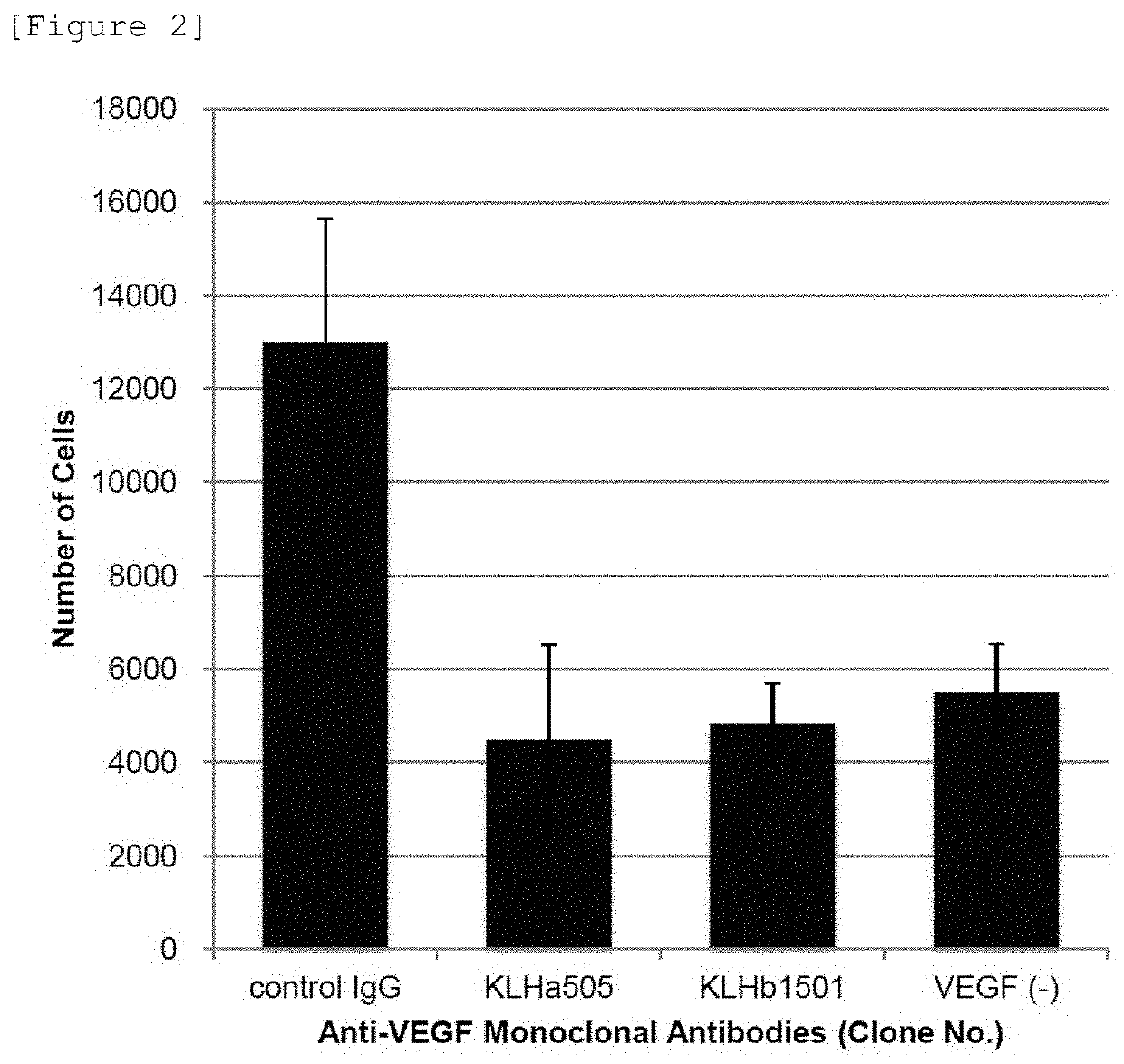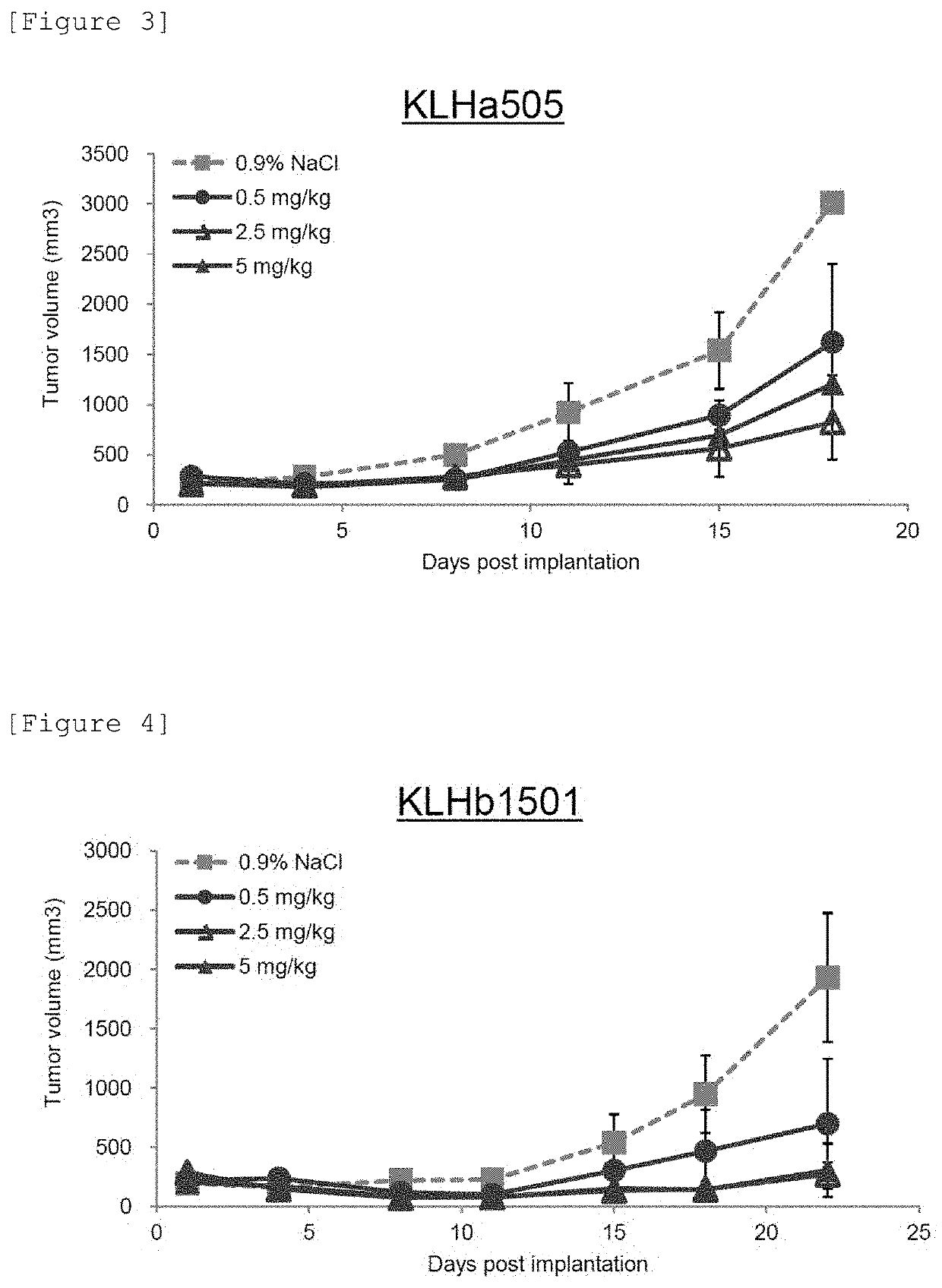High-affinity Anti-vegf antibody
an anti-vegf, high-affinity technology, applied in the direction of antibody medical ingredients, drug compositions, peptides, etc., to achieve the effect of high affinity
- Summary
- Abstract
- Description
- Claims
- Application Information
AI Technical Summary
Benefits of technology
Problems solved by technology
Method used
Image
Examples
example 1
Preparation of Monoclonal Antibody
(1) Preparation of Antigen
[0127]Human recombinant VEGF165 (hereafter, may also be referred to as “VEGF”, “rhVEGF165” or “rhVEGF”) expressed by CHO cells (PROSPEC) was used as an antigen. For the purpose of suppressing the effect of VEGF on mice, an antigen bound to KLH (Keyhole Limpet Hemocyanin) was prepared. In this case, VEGF and KLH were mixed so that the molar ratio of VEGF to KLH was 4:1 in PBS (−) (0.01 M sodium-phosphate buffer, 0.138 M NaCl, 0.0027 M KCl, pH 7.4), and then 1% glutaraldehyde was added, and then the mixture was allowed to react at room temperature for 1 hour, thereby cross-linking KLH and rhVEGF165. The thus prepared protein may also be referred to as “KLH-VEGF” in the followings.
(2) Immunization
[0128]rhVEGF or KLH-VEGF and Freund's complete adjuvant were mixed in equal amounts, and then the mixture was administered intraperitoneally to BALB / c mice in an amount of 100 μl (about 40 μg / mouse). Subsequently, about 40 μg of KLH-V...
example 2
Evaluation of the Capability of Monoclonal Antibodies to Inhibit Binding of VEGF to its Receptor
[0132]An anti-VEGF antibody binds to VEGF to block the binding of VEGF to its receptors, VEGFR-1 and / or VEGFR-2, to be able to inhibit signal transduction through mediation of VEGF.
[0133]KLHa505 and KLHb1501 were separated and purified from the culture supernatants of the two positive clones using Protein G.
[0134]Next, IgG Fc-VEGFR-1 or IgG Fc-VEGFR2 was immobilized on a 96-well ELISA plate. After blocking with 2% bovine serum albumin, a purified antibody mixed with rhVEGF was added to the plate, followed by reaction at room temperature for 1 hour. A solution was prepared by mixing with rhVEGF, and then washed 3 times with 0.05% TWEEN® 20-containing TBS (TBS: 50 mM Tris-HCl (pH7.4), 500 mM NaCl; hereafter, referred to as “TBS-T”). Thereafter, through color development using rabbit anti-human VEGF polyclonal antibody-HRP, the rhVEGF content was determined.
[0135]As a result, it was demonstr...
example 3
[0137]Measurement of Dissociation Constant of KLHa505 and KLHb1501 for Binding to rhVEGF
[0138]With the use of BIAcore-3000, Kd of KLHa505 and Kd of KLHb1501 for binding to VEGF were determined. rhVEGF was immobilized on a CMS chip, serial dilution was performed twice with HBS-EP buffer, and then each antibody was injected at a flow rate of 30 μL / min. Kd is Koff / Kon.
[0139]As a result, it was demonstrated that the dissociation constant for binding of KLHa505 to rhVEGF was 4.23 pmol / L, and the dissociation constant for binding of KLHb1501 to rhVEGF was 0.60 pmol / L.
[0140]When compared with the dissociation constant for an existing antibody (for example, the dissociation constant for Avastin (bevacizumab) is 4.9 nmol / L), the dissociation constants for the antibodies of the present invention were each 1 / 1000 or less that for the existing antibody. Hence, the binding activity of the antibodies that bind to VEGF is significantly high.
[0141]That is, in this Example, the antibodies (high-affi...
PUM
| Property | Measurement | Unit |
|---|---|---|
| dissociation constant | aaaaa | aaaaa |
| dissociation constant | aaaaa | aaaaa |
| average molecular weight | aaaaa | aaaaa |
Abstract
Description
Claims
Application Information
 Login to View More
Login to View More - R&D
- Intellectual Property
- Life Sciences
- Materials
- Tech Scout
- Unparalleled Data Quality
- Higher Quality Content
- 60% Fewer Hallucinations
Browse by: Latest US Patents, China's latest patents, Technical Efficacy Thesaurus, Application Domain, Technology Topic, Popular Technical Reports.
© 2025 PatSnap. All rights reserved.Legal|Privacy policy|Modern Slavery Act Transparency Statement|Sitemap|About US| Contact US: help@patsnap.com



